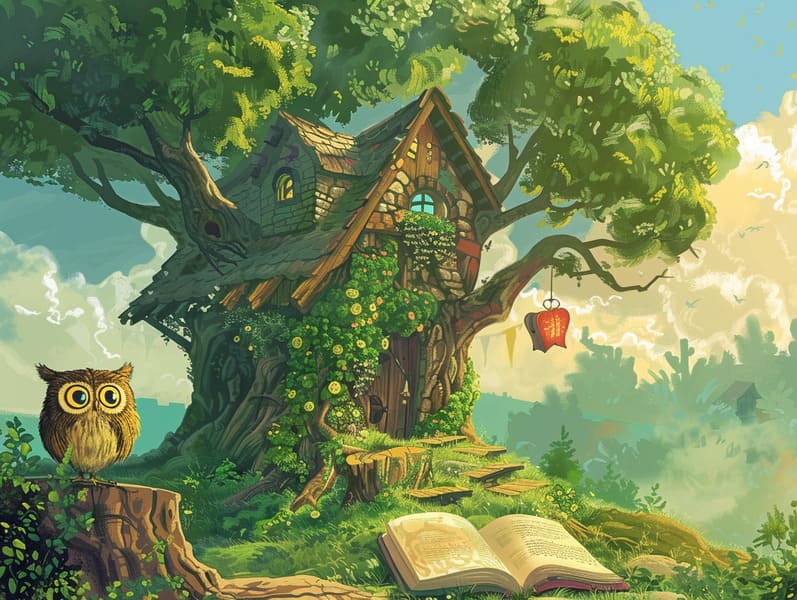The Origins of Bedtime Fairy Tales and Their Immortal Elegance.
The Origins of Bedtime Fairy Tales and Their Immortal Elegance.
Blog Article

Traditional fairy tales have old origins. These stories have been relayed from one generation to the next centuries before they were ever inscribed. They arose from a variety of backgrounds, including Asian traditions. They were initially disseminated among mature audiences, often carrying themes and messages pertaining to the societal norms and beliefs of the time.
The Brothers Grimm, Jacob and Wilhelm (the Grimm brothers), were among the first to collect and release many of these beloved tales. Their anthology, "Grimm's Folk Tales," included narratives like "Ashenputtel," "Hansel and Gretel," and "Little Snow White," which have since become pillars in the world of iconic fairy tales. Similarly, Hans Christian Andersen's magical fairy tales, such as "The Little Mermaid," and "The Duckling's Story," have captivated hearts worldwide, solidifying their place in the pantheon of treasured fairy tales.
Even though they are old, traditional fairy tales remain as significant as ever, especially as children's bedtime stories. These magical stories are now available in multiple formats, including vibrantly illustrated books, whimsical animations, and online storybooks.
Their persistent charm can be credited to several enchanting factors:
Crucial Morals: Ancient fairy tales often provide important moral lessons. Narratives like "The Tale of the Boy Who Cried Wolf" teach the significance of honesty, while "The Story of the Tortoise and the Hare" illustrate the traits of perseverance and meekness. These tales offer kids clear distinctions between virtue and vice, developing their moral compass in a tender yet profound way.
Empathy and Understanding: Traditional fairy tales frequently depict heroines facing challenges and problems, prompting kids to resonate with their struggles and root for their triumphs. For instance, "Beauty and the Beast" teaches us the merit of looking beyond appearances to appreciate the inner core of a soul, cultivating kindness and comprehension.
Cultural Perception: Many fairy tales are interwoven with the cultural contexts from which they were born. Exploring these tales can provide captivating looks into different cultures, cultivating a sense of global respect and discernment.
Creativity and Fantasy: The fanciful elements in old fairy tales—mythical entities—boost children’s fantasy worlds. These fairy tales carry readers to otherworldly realms, revitalizing innovative thinking and a sense of fascination that continues a lifetime.
Timeless fairy tales are not only charming but also enlightening. They work as fascinating tools in building various brain and heart skills in the young. When timeless fairy tales are spoken, they cultivate language skills by teaching new terms and complex sentence structures. This practice also cultivates hearing perception and attentiveness, as young ones pay close attention, anxious to see what happens next.
Furthermore, contemplating the themes and characters of timeless fairy tales can cultivate problem-solving abilities and analytical skills. The young are educated to discern patterns, forecast, and know cause and effect. These reflections also assist kids communicate their thoughts and feelings, enhancing their emotional intelligence.
In today’s digital age, the prevalence of web-based fairy tales has made these narratives more attainable than ever. Digital sites and applications provide comprehensive collections of famous fairy tales that can be seen or listened via anytime, anywhere. Fairy tales read out loud are particularly favored, presenting an delightful method for kids to appreciate these delightful tales. Voice books and narrated videos transport characters and settings to life, often joined by enchanting music and music that enhance the narrative adventure.
The timeless allure of ancient fairy tales lies in their ability to adjust to current times while sustaining their central values. Contemporary takes of these fairy tales often showcase more different protagonists and modern settings, making them relatable to today’s audience. However, the central morals of braveness, empathy, and equity remain find it here unchanged, continuing to connect with listeners of all ages.
Traditional fairy tales also offer a sense of serenity and recognition. They confer a systematic narrative with a apparent beginning, middle, and end, often winding up with the wrap-up of conflicts and the triumph of righteousness over wickedness. This constancy can be easing for kids, making available a sense of security in an ever-changing world.
Ancient fairy tales continue to captivate and guide new generations, maintaining their wonder and importance in modern society. As nighttime stories for kids, they extend a perfect blend of charm and understanding, nurturing moral values, empathy, and creativity. The prevalence of online storybooks and the likability of fairy tales told out loud certify that these classic fairy tales remain available to new generations.
By conserving and communicating these fairy tales, we continue to extol the rich tapestry of cultural heritage and cultural heritage. Whether you are browsing a vibrantly illustrated book, experiencing a cyber collection, or hearing an voice book, the radiance of bedtime fairy tales is always within reach. These narratives illustrate of the everlasting power of narratives and its ability to tie us across generations and cultures.
If you are seeing a beautifully illustrated book, discovering a internet collection, or listening through an read-aloud story, the spell of traditional fairy tales is always within reach.
These fairy tales demonstrate of the eternal presence of fairy tales and its ability to bring us together across epochs and places, creating a bond that captivates and teaches alike.